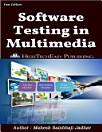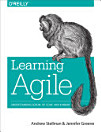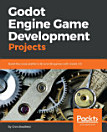Educational Gameplay and Simulation Environments: Case Studies and Lessons Learned: Case Studies and Lessons Learned
អំពីសៀវភៅអេឡិចត្រូនិកនេះ
Educational Gameplay and Simulation Environments: Case Studies and Lessons Learned presents a remarkable collection of cases demonstrating how to conceptualize, design, and implement games and simulations effectively for learning. This paramount publication will aid educators, researchers, and game developers in broadening their work to effectively create and implement engaging learning environments for present and future students.
ការដាក់ផ្កាយ និងមតិវាយតម្លៃ
អំពីអ្នកនិពន្ធ
Louise Sauvé, Professor at Télé-université, Quebec’s distance education institution, received her doctorate in Educational Technology from the University of Montreal in 1985. She is Director of the Center for Expertise and Research in Lifelong Learning (SAVIE) for which she has obtained many major research grants and contracts. Dr. Sauvé has received numerous awards, notably the medal of the National Assembly of Quebec and the Special Prize of the Quebec Minister of Education, and has presented more than 250 scientific papers and workshops in North America, Europe, Asia, Central and South America, North Africa, and Australia. She has directed 20 university-level distance education courses and produced more than 60 research reports. Dr. Sauvé has published more than 160 research papers, review articles and book chapters. She also serves as a reviewer for several funding agencies and journals. Dr. Sauvé and her colleague Dr. Kaufman recently completed a $3 million, five-year project entitled Simulation and Advanced Gaming Environments (SAGE) for Learning. They currently hold an SSHRC research grant and are continuing their work in this area. [Editor]




